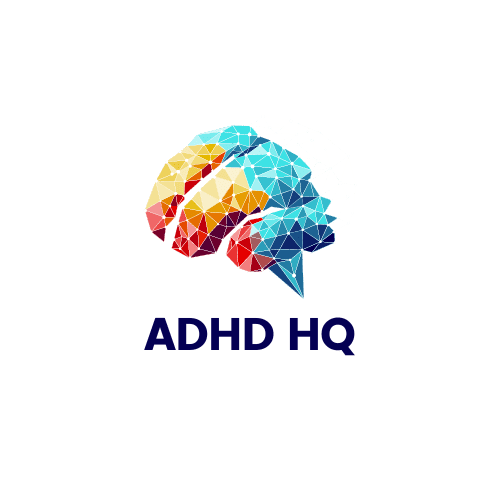Adhd Couch Lock
Feeling like a ship trapped in thick fog, exploring through the haze of distractions and uncompleted tasks, I often find myself succumbing to the peculiar state known as ADHD couch lock. The struggle to break free from the invisible restraints that keep me immobilized can be challenging.
However, understanding the causes and effective strategies to combat this phenomenon has been a game-changer in reclaiming my focus and productivity. So, how does one overcome this mental quicksand and regain control?
Key Takeaways
- Break tasks into smaller steps to overcome ADHD couch lock.
- Implement movement breaks to boost dopamine levels and focus.
- Organize tasks into manageable pieces to prevent overwhelm.
- Establish routines and use timers to structure tasks and prevent procrastination.
Understanding ADHD Couch Lock
In understanding ADHD couch lock, we explore the intricate interplay of executive dysfunction and its impact on task initiation and completion in individuals with ADHD. Executive dysfunction in ADHD refers to difficulties in managing time, organizing tasks, and regulating emotions, leading to challenges in starting and finishing activities. This can result in a state of task paralysis where individuals feel mentally stuck and unable to move forward, despite their intentions.
One key factor contributing to ADHD couch lock is the role of dopamine levels in the brain. Dopamine is a neurotransmitter involved in motivation, reward, and movement. In individuals with ADHD, there may be dysregulation in dopamine levels, affecting their ability to initiate tasks and experience a sense of accomplishment upon completion.
Understanding how executive dysfunction and dopamine levels intersect in ADHD can provide insights into strategies to address ADHD couch lock. By implementing techniques such as breaking tasks into smaller manageable steps, setting specific goals, and addressing emotional barriers, individuals with ADHD can work towards overcoming task paralysis and improving their productivity.
Impact of ADHD Couch Lock
The impact of ADHD couch lock on individuals' daily functioning and productivity can't be underestimated. It's a significant challenge that many of us face, affecting our ability to complete tasks and engage in activities effectively. When ADHD couch lock sets in, here are three emotional aspects that individuals may experience:
- Frustration: The feeling of wanting to be productive but being physically unable to move can lead to frustration and a sense of helplessness.
- Guilt: Not being able to accomplish what needs to be done due to ADHD couch lock may evoke feelings of guilt and self-criticism.
- Overwhelm: The paralysis caused by executive dysfunction can result in a sense of being overwhelmed by even the simplest of tasks.
Coping through these emotions while dealing with ADHD couch lock can be challenging. Implementing coping mechanisms such as setting small achievable goals, incorporating movement breaks, and seeking support from loved ones or professionals can help in managing this challenge effectively.
Causes of ADHD Couch Lock
Traversing through the challenges of ADHD couch lock requires a deep understanding of the underlying causes that contribute to this immobilizing state. Executive dysfunction plays a significant role, making it difficult for individuals to initiate or complete tasks, leading to a sense of being stuck on the couch.
Additionally, dopamine dysregulation in those with ADHD can hinder motivation and productivity, exacerbating the couch lock phenomenon. The feeling of overwhelm from the demands of multiple tasks or stimuli can also trigger couch lock, overwhelming individuals and impeding their ability to function effectively.
Furthermore, the lack of structure or routine can worsen ADHD couch lock, making it challenging to engage in tasks due to a lack of organization. Emotional dysregulation and sensory overload further contribute to this state, impacting focus and productivity. Understanding these causes is essential in developing effective strategies to overcome ADHD couch lock and improve daily functioning.
Strategies to Overcome ADHD Couch Lock
When facing ADHD couch lock, incorporating movement breaks for focus, organizing tasks effectively, and utilizing timers for productivity are key strategies to contemplate.
These methods can help break the cycle of inactivity and provide a structured approach to tackling tasks.
Movement Breaks for Focus
To enhance focus and combat ADHD couch lock, incorporating regular movement breaks throughout the day is essential for boosting dopamine levels and increasing productivity. Movement breaks offer an invigorating pause from sedentary activities, helping to reinvigorate both the body and mind.
Here are three key ways movement breaks can benefit individuals struggling with ADHD couch lock:
- Stimulate Dopamine Release: Engaging in short bursts of physical activity can trigger the release of dopamine, a neurotransmitter that plays a critical role in attention and motivation.
- Break Inactivity Patterns: Moving your body periodically interrupts the cycle of inactivity, preventing the feeling of being stuck and enhancing overall energy levels.
- Enhance Cognitive Function: Regular movement intervals can improve cognitive function, mood, and overall well-being, making it easier to maintain focus and productivity throughout the day.
Organize Tasks Effectively
When combating ADHD couch lock, one effective strategy to overcome this challenge is to organize tasks effectively by breaking them into smaller, manageable pieces. This approach helps in reducing the feeling of being overwhelmed, making tasks seem more achievable.
By addressing task avoidance barriers creatively, individuals with ADHD can overcome the paralysis experienced during couch lock. Gamifying tasks, turning them into engaging challenges, can boost motivation by increasing dopamine levels. Adding elements like rewards, accountability, and novelty to tasks can make starting or completing them more appealing.
Understanding the reasons behind task avoidance and implementing strategies like making lists, setting timers, acknowledging emotions, and incorporating movement breaks can help in overcoming couch lock and initiating action effectively.
Utilize Timers for Productivity
Breaking tasks into smaller, manageable chunks allows individuals with ADHD to effectively utilize timers for boosting productivity and overcoming couch lock. Timers serve as invaluable tools in managing time and maintaining focus.
Here are three ways timers can help combat ADHD couch lock and enhance productivity:
- Creating Structure: Timers provide a clear framework for work intervals, offering a sense of organization that's essential for individuals struggling with ADHD couch lock.
- Encouraging Momentum: The ticking clock instills a sense of urgency, prompting action and preventing procrastination, which is common among those experiencing ADHD couch lock.
- Preventing Overwhelm: By breaking tasks into timed segments, individuals can avoid feeling overwhelmed, making work more manageable and increasing overall productivity levels.
Prevention of ADHD Couch Lock
I understand the struggle of maintaining focus and productivity with ADHD, which is why incorporating movement breaks and establishing a routine are essential in preventing couch lock.
By setting timers and using tools like task lists, you can effectively manage your tasks and avoid becoming overwhelmed, ultimately staying on track and avoiding prolonged periods of inactivity that can hinder your progress.
Engaging in physical activities and utilizing techniques like the Pomodoro method can help regulate dopamine levels and keep you focused, preventing the onset of ADHD couch lock.
Movement Breaks for Focus
To maintain focus and prevent ADHD couch lock, incorporating regular movement breaks into your routine is essential for boosting brain function and productivity. Movement breaks every 25-30 minutes can enhance blood flow and oxygen delivery to the brain, helping combat the risk of couch lock.
Engaging in physical activities like stretching, walking, or dancing during these breaks can aid in maintaining focus and reducing the chances of becoming stagnant. These movement breaks play a vital role in regulating dopamine levels in the brain, which are important for motivation and preventing inactivity.
By integrating short bursts of exercise into your daily schedule, you can break the cycle of couch lock and stay actively engaged in tasks, promoting both mental clarity and overall well-being.
- Regular movement breaks boost brain function and productivity.
- Physical activities during breaks aid in maintaining focus.
- Movement breaks regulate dopamine levels, enhancing motivation.
Establish Routine for Productivity
In establishing a consistent routine to prevent ADHD couch lock, prioritizing structure and predictability is key for maintaining productivity and focus.
Breaking down tasks into smaller, manageable steps can help prevent feeling overwhelmed and stuck in a state of inactivity.
Incorporating regular breaks and movement throughout the day to combat the sedentary effects of couch lock associated with ADHD is crucial.
Setting specific goals and deadlines creates a sense of urgency and motivation, preventing a state of inaction.
By engaging in activities that promote focus and concentration, such as mindfulness or meditation, individuals can avoid succumbing to ADHD couch lock.
Managing ADHD Couch Lock
When faced with managing ADHD couch lock, breaking tasks into smaller steps and incorporating rewards can be effective strategies to overcome feelings of being stuck and boost productivity. Executive dysfunction often leads to this overwhelming sensation, making it challenging to initiate or complete tasks. To combat this, I suggest the following:
- Break Tasks Down: Divide your tasks into smaller, more manageable steps. This approach can make the workload feel less intimidating and help you progress gradually.
- Incorporate Rewards: Consider adding rewards or incentives for completing each step. This can provide motivation and a sense of accomplishment, making the process more enjoyable.
- Boost Dopamine Levels: Engage in activities that increase dopamine levels, such as movement, listening to music, having snacks, or exposing yourself to sunlight. Dopamine plays an important role in motivation and can help you overcome the couch lock feeling.
Frequently Asked Questions
What Is Task Paralysis Adhd?
Task paralysis in ADHD, also known as executive dysfunction, can result in cognitive overload, time blindness, and hyperfocus tendencies. It hinders task initiation and completion, leading to feelings of being overwhelmed and stuck.
What Is ADHD Freeze?
Attention overload, mental exhaustion, hyperfocus challenge, decision-making struggles—all facets of ADHD freeze. It's like being trapped in quicksand, each task feels impossible to tackle. Overcoming requires patience, understanding, and tailored coping strategies.
What Is ADHD Scrolling Paralysis?
I struggle with ADHD scrolling paralysis, a challenge where I compulsively scroll through digital content, leading to wasted time and decreased productivity. Screen addiction, digital overwhelm, information overload, and attention depletion exacerbate this issue.
What Is Choice Paralysis Adhd?
Cruising choice paralysis in ADHD presents decision-making challenges, focus struggles, time management difficulties, and productivity obstacles. It's a constant battle against inertia. Overcoming this requires patience, strategic planning, and self-compassion to move forward effectively.
Conclusion
As I navigate through the challenges of ADHD couch lock, I envision myself breaking free from the mental chains that hold me back.
With determination and strategic planning, I can overcome the paralysis and reclaim my productivity.
Like a butterfly emerging from its cocoon, I'm ready to spread my wings and soar towards success.
Embrace the journey, embrace the struggle, and emerge stronger on the other side.







